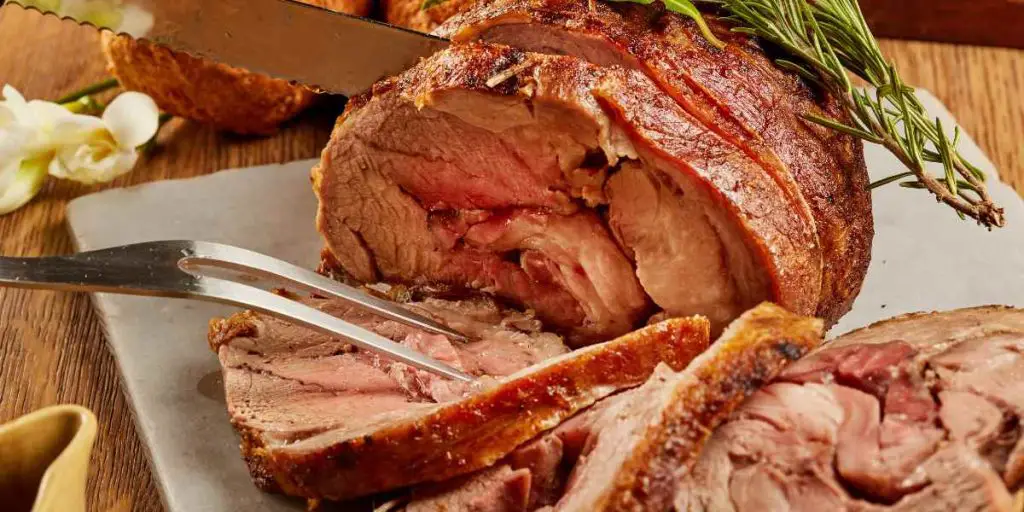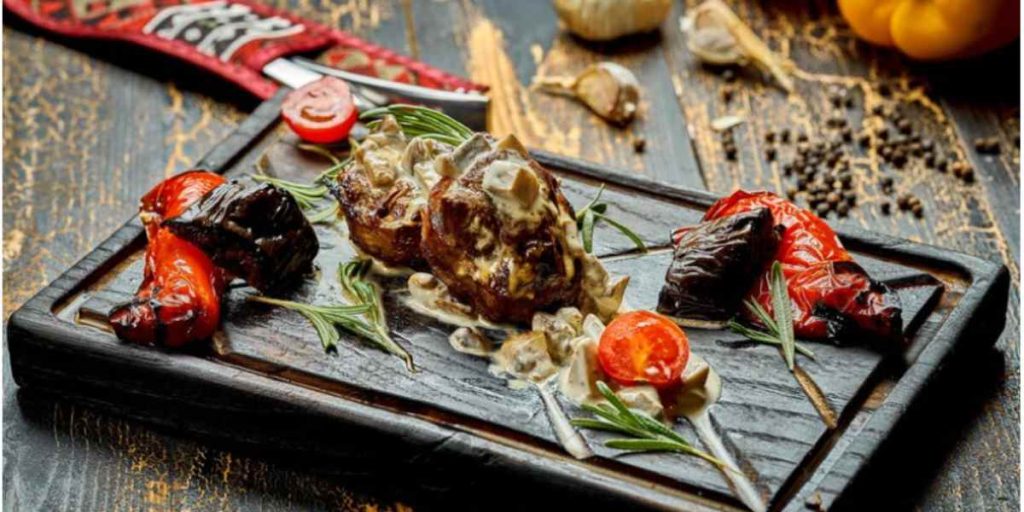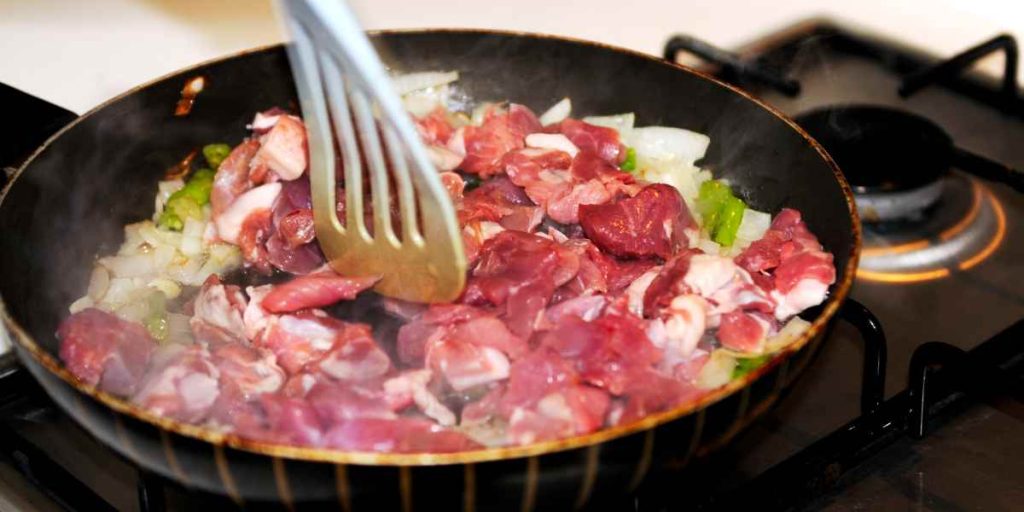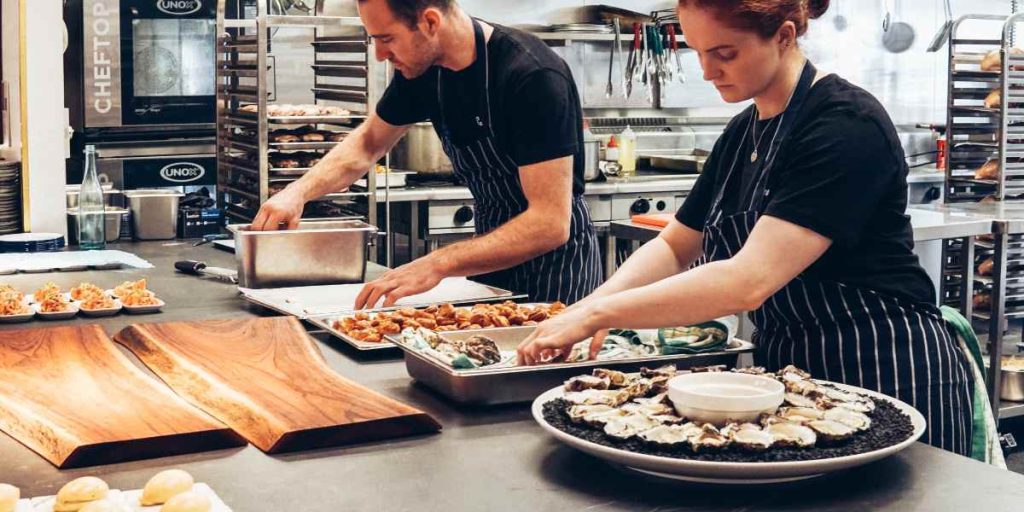Undeniable Proof That You Need Know: Can You Eat Lamb Rare
Can you eat lamb rare? Yes, you can eat lamb rarely. Many people prefer lamb rare because it is more tender and flavorful. The key to cooking lamb rare is to not overcook it. If you overcook lamb, it will become tough and dry. When cooking lamb rare, you want to cook it for just a few minutes per side. This will ensure that the lamb is cooked through but still pink in the middle. Lamb rare is the perfect way to enjoy this delicious meat.
What is the ideal internal temperature for a rare lamb?
The ideal internal temperature for a rare lamb is 145 degrees Fahrenheit. This is the temperature that is most commonly used by restaurants to ensure that the lamb is cooked to the proper temperature.
Can you eat lamb cooked rare
Lamb is a delicious, versatile meat that can be cooked in a variety of ways. When it comes to doneness, lamb can be cooked anywhere from rare to well-done, depending on your preference.
If you like your lamb on the rare side, the best way to cook it is to sear it quickly over high heat. This will give the outside of the meat a nice crust, while the inside remains pink and juicy. For a more well-done lamb, you can cook it slower over lower heat, until the inside is cooked through.
No matter how you like your lamb, it’s important to let the meat rest for a few minutes before cutting into it. This will help to keep all the juices inside, making for a more tender and flavorful lamb dish.
So, next time you’re in the mood for lamb, don’t be afraid to cook it rare. With a little know-how, you can create a delicious, juicy lamb dish that everyone will enjoy.
Can you eat lamb rare medium?

Yes, you can eat lamb medium rarely. Many people believe that lamb is best when cooked in medium rare. This allows the meat to retain its juiciness and flavor, while also ensuring that it is cooked through. When cooking lamb medium rare, be sure to use a meat thermometer to ensure that the internal temperature of the meat reaches 145 degrees Fahrenheit.
What is the lamb?
Most people are familiar with the term “lamb” about a baby sheep, but not everyone knows exactly what a lamb is. A lamb is a young sheep that is typically less than one year old. The word “lamb” can also be used to refer to the meat of a young sheep, which is considered to be a delicacy in many cultures.
Lambs are born in the springtime and are typically fed on their mother’s milk for the first few months of their life. Once they are old enough, they are then introduced to solid food and begin to graze on grass and other vegetation. Lambs typically reach maturity at around one year old, at which point they are considered to be sheep.
The wool of a lamb is prized for its softness and is often used in the manufacture of clothing and other textiles. Lambs are also slaughtered for their meat, which is considered to be a delicacy in many parts of the world.
So, what is the lamb? A lamb is a young sheep that is typically less than one year old. The wool of a lamb is prized for its softness and the meat is considered to be a delicacy.
Is lamb red meat?
What is the difference between lamb and mutton?
Lamb is the meat of a young sheep, while mutton is the meat of an older sheep. Mutton has a stronger, more gamey flavor than lamb, and is tougher and fattier. Lamb is more tender and has a milder flavor.
Where do you get lamb from?

Lamb is a delicious and nutritious red meat that can be enjoyed in a variety of ways. Whether you’re looking for a traditional roast, a flavorful stew, or a simply grilled chop, lamb is a great option. But where does this popular meat come from?
Lamb is most commonly associated with sheep, and for good reason. Sheep are the primary source of lamb meat, with most of it coming from young animals. The lamb is one of the oldest domesticated animals in the world, with evidence of sheep husbandry dating back over 10,000 years.
While sheep are the main source of the lamb, other animals can also provide this meat. Lamb from goats is also common, although it can be difficult to find in some areas. Camel, bison, and even deer can also be sources of lamb meat.
No matter what the source, lamb meat is a delicious and nutritious option for your next meal. So, next time you’re in the mood for something different, give the lamb a try!
How do you cook lamb?
Lamb is a versatile meat that can be cooked in a variety of ways. Whether you’re looking to roast a whole lamb or cook individual lamb chops, there’s a method to suit your needs.
Roasting a lamb is a classic way to cook the meat, and results in a tender and juicy finished dish. First, you’ll need to preheat your oven to the correct temperature – typically between 325 and 350 degrees Fahrenheit. Then, rub your lamb with a mixture of olive oil, salt, and pepper. Place the lamb in a roasting pan, and cook it for the appropriate amount of time-based on its weight. For example, a 4-pound lamb roast should be cooked for approximately 2 hours.
If you’re looking for something a bit quicker, lamb chops are a great option. Season the chops with salt and pepper, then heat a skillet over medium-high heat. Add a bit of olive oil to the pan, and cook the chops for 3-5 minutes per side, until they’re nicely browned. Serve with your favorite sides, and enjoy!
What is the best way to cook lamb?

Lamb is a delicious and versatile meat that can be cooked in a variety of ways. When it comes to deciding how to cook lamb, there is no one-size-fits-all answer. The best way to cook lamb will depend on your personal preferences and the specific cut of meat you are using.
One of the most popular ways to cook lamb is to roast it in the oven. This method is ideal for cuts of lamb that are larger and more evenly shaped, such as a leg of lamb. Roasting lamb in the oven allows you to cook it slowly and evenly, resulting in a juicy and tender finished product.
If you are looking for a quicker cooking method, lamb can also be cooked on the stovetop. This is a good option for smaller cuts of meat, such as lamb chops. When cooking lamb on the stovetop, it is important to use a pan that is large enough to fit all of the pieces of meat without overcrowding. Otherwise, the lamb will not cook evenly and could end up being dry.
No matter how you choose to cook lamb, it is important to cook it to an internal temperature of 145 degrees Fahrenheit. This will ensure that the meat is cooked through and safe to eat. Use a meat thermometer to check the internal temperature of the lamb before serving.
Is lamb red meat?
No, lamb is classified as a slice of white meat.
Is it safe to eat lamb medium rarely?
Yes, it is safe to eat lamb medium rare. However, it is recommended to cook lamb to an internal temperature of 145°F as measured with a food thermometer.
How do you know if lamb is cooked medium rare?
You can check the internal temperature of the lamb with an instant-read thermometer to determine if it is cooked medium rare. Medium rare lamb should have an internal temperature of 140-145°F (60-63°C).
What does lamb taste like?
Lamb has a distinct, slightly sweet, and savory flavor that is slightly gamey. It is often described as having a delicate, mild flavor.
What can you eat lamb with?
Lamb can be served with a variety of sides, such as roasted potatoes, steamed vegetables, couscous, quinoa, or a salad. It can also be served with traditional accompaniments such as mint jelly, tzatziki, or a yogurt-based curry.
What is a traditional dish made with lamb?
One traditional dish made with lamb is shepherd’s pie. It is a savory pie made with a base of ground lamb mixed with onion, celery, carrots, and sometimes peas or corn, covered with a layer of mashed potatoes, and then baked.
What are some other dishes that can be made with lamb?
1. Lamb Kofta Curry 2. Lamb Souvlaki 3. Lamb Rogan Josh 4. Lamb Shish Kebab 5. Lamb Shepherd’s Pie 6. Lamb Biryani 7. Lamb Moussaka 8. Lamb Kebabs with Tzatziki Sauce 9. Lamb Burgers 10. Lamb Tagine
Is lamb healthy meat to eat?
Yes, lamb is a healthy meat to eat. It is a good source of protein and is rich in important vitamins and minerals such as iron, zinc, and B vitamins. It is also a source of healthy fats, including omega-3 fatty acids.
What are the nutritional benefits of eating lamb?
Lamb is nutritious meat that provides a range of health benefits. It is an excellent source of protein and essential nutrients, including iron, zinc, and vitamin B12. Lamb is also a good source of omega-3 fatty acids, which are beneficial for heart health.
The nutritional content of lamb varies depending on the cut of meat. For example, lamb leg is a leaner cut of meat than lamb shoulder. However, all cuts of lamb provide a good source of nutrients.
Lamb is a rich source of protein, providing 18-20g per 100g (3.5oz). Protein is essential for the growth and repair of tissues and is also involved in the production of hormones and enzymes.
Lamb is also a good source of essential nutrients, including iron, zinc, and vitamin B12. Iron is needed for the production of red blood cells, which carry oxygen around the body. Zinc is involved in wound healing and the immune system, and vitamin B12 is needed for the production of red blood cells and the nervous system.
Lamb is also a good source of omega-3 fatty acids. These are beneficial for heart health, as they can help to reduce blood pressure and cholesterol levels.
How often should you eat lamb?
It is recommended to eat lamb no more than once or twice a week.
What are the consequences of eating lamb that is not cooked to a sufficiently high temperature?
Eating lamb that is not cooked to a sufficiently high temperature can cause foodborne illnesses such as salmonella and E. coli. These illnesses can cause symptoms such as diarrhea, vomiting, fever, abdominal cramps, and headaches. In severe cases, foodborne illnesses may lead to hospitalization and even death.
Is it safe to eat the lamb that is pink in the middle?
If you’re like most people, you probably grew up thinking that meat should be cooked until it’s nice and brown all the way through. After all, that’s how it’s usually served at restaurants, and it’s what most cookbooks recommend. But what if you’re at a barbecue and someone offers you a juicy steak that’s still pink in the middle? Is it safe to eat?
The short answer is yes, it is perfectly safe to eat the lamb that is pink in the middle. Many people believe that it’s more delicious than the lamb that has been cooked all the way through. The key is to make sure that the meat has reached a safe internal temperature.
When meat is cooked, the heat causes the muscle fibers to contract and the juices to be forced out. If the meat is cooked all the way through, the juices will be completely gone and the meat will be dry and tough. However, if the meat is only cooked part of the way through, the juices will still be present, making the meat more tender and flavorful.
The ideal internal temperature for lamb is 145 degrees Fahrenheit. At this temperature, the meat will be pink in the middle but will still be juicy and delicious. If you’re not sure whether the lamb has reached this temperature, you can use a meat thermometer to check.
So next time you’re at a barbecue and someone offers you a steak that’s still pink in the middle, don’t be afraid to try it! Just make sure that it’s been cooked to a safe internal temperature and enjoy the juicy, delicious flavor.
What are some common mistakes that people make when cooking lamb?

One of the most common mistakes people make when cooking lamb is not letting it rest before cutting into it. When you cook any kind of meat, it’s important to let it rest for a few minutes before cutting into it. This allows the juices to redistribute throughout the meat, making it more tender and flavorful. If you cut into a lamb that hasn’t had a chance to rest, all of those delicious juices will end up on your cutting board instead of in your mouth.
Another common mistake is overcooking lamb. Lamb should be cooked to an internal temperature of 145 degrees Fahrenheit, which is considered medium-rare. Any more than that and the lamb will start to dry out and become tough. Use a meat thermometer to check the temperature of the lamb, and take it off the heat when it reaches 145 degrees.
One last common mistake people make when cooking lamb is not letting it come to room temperature before cooking it. If you put a cold piece of lamb into a hot pan, the outside will start to cook before the inside has a chance to warm up. This can lead to uneven cooking, with the outside being overcooked and the inside still being cold. To avoid this, take the lamb out of the fridge about 30 minutes before you plan to cook it. This will give it a chance to come to room temperature, resulting in more evenly cooked lamb.
What are some tips for cooking lamb so that it turns out perfectly every time?
When it comes to cooking lamb, there are a few things you can do to ensure it turns out perfectly every time. First, make sure the lamb is at room temperature before cooking. If it’s too cold, it will be tough; if it’s too hot, it will be dry. Second, use a meat thermometer to check the internal temperature of the lamb. lamb is best served at 145°F. Third, give the lamb a rest after cooking to allow the juices to redistribute. This will make it even more tender and juicy. Finally, don’t forget the seasoning! Season the lamb with salt, pepper, and any other herbs or spices you like. This will help to bring out the flavor and make it even more delicious.
Now that you know these tips, it’s time to get cooking! Try one of these delicious recipes:
Herb-Crusted Rack of Lamb: This recipe features a delicious herb crust that helps to lock in the flavors of the lamb.
Roasted Leg of Lamb: This classic recipe is always a crowd-pleaser. The key is to cook it low and slow to ensure it’s nice and tender.
Lamb Chops with Mint Sauce: These succulent lamb chops are served with a refreshing mint sauce. The perfect combination of flavors!
So, there you have it! These are just a few tips to help you cook lamb perfectly every time. With these tips, you’ll be able to impress your guests and enjoy a delicious meal.
Conclution
In conclusion, it is safe to eat lamb rare as long as it is cooked to an internal temperature of 145°F. This will help ensure that the meat is cooked to a safe temperature and that any potential bacteria or parasites are eliminated. In addition, it is important to follow proper food safety practices, such as washing hands and utensils after handling raw meat, to reduce the risk of foodborne illness. With the right temperature and safety precautions, you can enjoy a delicious meal of rare lamb.






